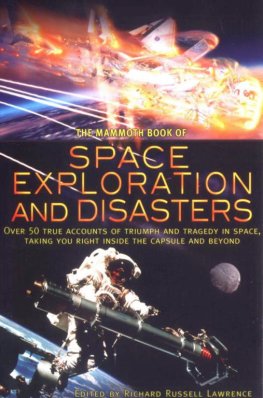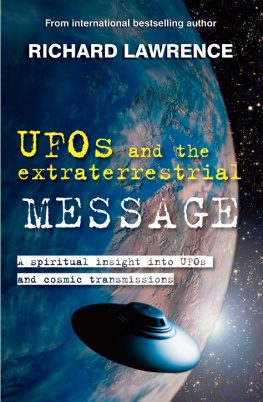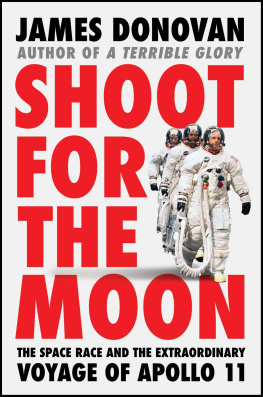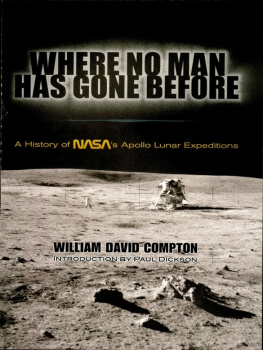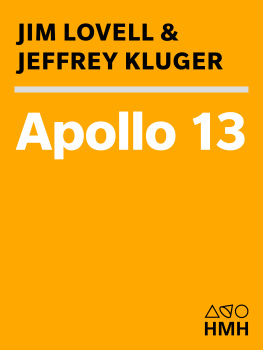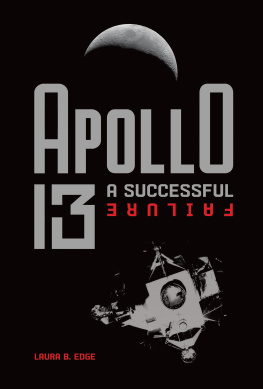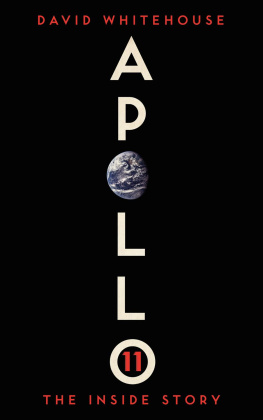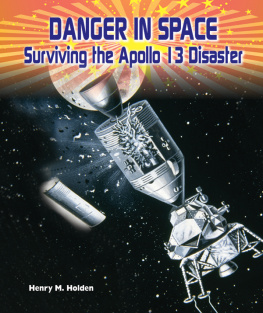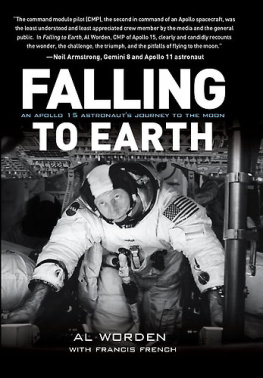THE MAMMOTH BOOK OF
SPACE EXPLORATION AND DISASTERS
Edited by Richard Russell Lawrence
Chapter 1
A-4: Aggregate 4, the prototype German rocket
LOX: Liquid Oxygen
NACA: National Advisory Committee on Aeronautics
NASA: National Aeronautics and Space Administration
V-2: Vergeltungswaffe 2 (Vengeance weapon 2)
Chapter 2
ASCS: Automatic Stabilization and Control System
EOR: Earth Orbit Rendezvous
G: Gravity, normal gravity on earth is IG
ICBM: Intercontinental Ballistic Missile
JPL: Jet Propulsion Laboratory
LOR: Lunar Orbit Rendezvous
LOS: Loss Of Signal
LOX: Liquid Oxygen
MA: Mercury-Atlas
MIT: Massachusetts Institute of Technology
MPT: Mercury Procedures Trainer
M-R: Mercury Redstone
Q: Aerodynamic stress
SARAH: Search and Rescue and Homing
SECO: Sustainer Engine Cutoff
V-1: Vergeltungswaffe 1 (Vengeance weapon 1)
VfR: Verein fuer Raumschiffahrt (Space Travel Association)
USSR: Union of Socialist Soviet Republics
Chapter 3
ALSEP: Apollo Lunar Surface Experiments Package
AM: Airlock Module
AMU: Astronaut Manoeuvring Unit
ATDA: Augmented Target Docking Adapter
Capcom: Capsule communicator
CONTROL: Lunar Module flight control officer
CSM: Command Service Module
DOI: Descent orbit insertion
DSKY: Display & Keyboard
EECOM: Electrical & Environmental command officer
EGIL: Flight Controller for electrical and environmental systems at the launch
EST: Eastern Standard Time
EVA: Extra Vehicular Activity or spacewalking
FDI: powered descent initiation
FIDO: Flight dynamics officer
GET: Ground Elapsed Time
GNC: Guidance, Navigation and Control
GUIDO: Guidance officer
INCO: Instrument & Communications Officer
J-2: engine of the Saturn booster S-IVB third stage
LEM: Lunar Excursion Module
LLRV: Lunar Landing Research Vehicle
LM: Lunar Module
LOI: Lunar orbit insertion
LRL: Lunar Receiving Laboratory
MDA: Multiple Docking Adapter
MET: Modularised Equipment Transporter
PC+2: Two hours after Perycynthion (the closest point to the far side of the moon)
PLS S: portable life support system
PTC: Passive Thermal Control
RETRO: Retrofire officer
S1C: a variant of the Saturn booster (first stage)
SII: Saturn booster (second stage)
S-IVB: a variant of the Saturn booster (third stage)
S-WB: the Saturn stage which contained the LEM
SCE: Signal Condition Equipment
SM JETT: Service Module Jettison (switch)
SPS: Service Propulsion System (the CSMs engine)
SWS: Saturn Workshop (Skylab)
TEI: TransEarth Injection
TELMU: Telemetry, electrical, EVA, mobility unit officer
Chapter 4
BPS: Automatic docking equipment on board MIRs unmanned supply vessels
CCD: Charged Coupled Detectors
COSTAR: Corrective Optics Space Telescope Axial Replacement
DSD: a Depressurization Sensor
FA: First Aid
HST: Hubble Space Telescope
ISS: International Space Station
IVA: Intra Vehicular Activity (a spacewalk inside a depressurized space craft)
KURS: A radar/guidance system used when docking spaceships to space stations
LiOH: solid cylinders of Lithium hydroxide which filter CO2 out of the air
MOD: Missions Operations Directive
NCS: NICMOS Cooling System
OMS: Orbital Maneuvering System
OPM: Optical Properties Monitor
PS: Payload Specialist
SAMS: calibration device aboard MIR, used to study vibrations and structural stress
SEP: calibration of power levels remaining in MIRs batteries
SFOG: Solid Fuel Oxygen Generator
SUD: MIRs motion-control system
TDRS: Tracking and Data Relay Satellite
TORU A: remote control system for docking unmanned spaceships
TsUP: Soviet then Russian Mission Control
WFPC: Wide Field and Planetary Camera
Chapter 5
ESA: European Space Agency
MER: Mars Exploration Rover
SMART: Small Missions for Advanced Research in Technology
The quest to conquer space is packed with stories of triumph and disaster. The Mammoth Book of Space Exploration and Disasters presents over 50 of the most remarkable first-hand accounts of sub-orbital, orbital and deep space adventure, from the development of the rocket to the present day.
The accounts tell exactly what it was like to be a man in a can in the astronauts and the cosmonauts own words. Share Alan Shepards exhilaration at being the first astronaut in space. Ride with Scott Carpenter as he describes how he had to correct instrument malfunctions which would have prevented his re-entry into the Earths atmosphere.
The collection is divided into five chapters. Chapter 1, entitled At Heavens Door Testing the Limits, covers the development of jet and rocket propulsion from the end of the Second World War to the penetration of the upper atmosphere. These early accounts include Chuck Yeager breaking the sound barrier with a broken arm, and the test pilots own explanations of the dangerous new technology of rocket-propelled craft.
Chapter 2 is called Rockets Away Escape from Earth. It relives the early days of space flight, including the US Mercury program, with the astronauts revealing just how much they had to do. Among their accounts, John Glenns first American orbital flight stands out for its memorable description of Zero G and I feel fine.
Chapter 3 (Man in Space The Glory Days) spans the period from 1963 until 1974, including the US Gemini and Apollo and the Soviet Soyuz programs. The vivid descriptions here include Alexei Leonovs fight for his life as the first man to space walk when he found himself unable to get back into the spacecraft without taking the risk of deflating his space suit. Later he and his fellow cosmonaut crash-landed and had to spend the night sheltering from wild wolves.
The triumph of Apollo 11 is followed by the mishap of Apollo 12 and the famous problem of Apollo 13. You can only admire the resourcefulness of the ground team who brought them home safely. The chapter concludes with the memorable moment of Apollo-Soyuz shaking hands during the final Apollo mission.
Chapter 4 is entitled Retreat to Earth Cancellations Galore. Its accounts record the cancellations and setbacks during the period after 1974, including the Shuttle disasters (1986 and 2003) plus the endless crises aboard the space station Mir in 1997. The US-Russian crew suffered from depression, a near miss, fire, loss of power and a collision. In addition, they had to make a succession of perilous space walks; not all of them went back for more.
Chapter 5, entitled New Horizons The Ongoing Quest, continues the story up to the present day. It brings home the trials and tribulations of scientists involved in the search for life and the origins of the universe. In 2003 several new competitors joined the space race and the Star Trek propulsion drive began driving the European Space Agencys Smart 1 probe to the moon. Despite the human cost over the decades, it is clear the urge to explore space remains undiminished.
As Wernher von Braun, rocket scientist, put it, I have learned to use the word impossible with the greatest caution Dont tell me that man doesnt belong out there. Man belongs wherever he wants to go.
Chapter 1
At Heavens Door Testing the Limits
Introduction: from the Wright brothers to the X-1
The first successful powered flight took place in the United States. On 17 December 1903, Wilbur and Orville Wright made the first sustained, controlled flight in a powered aircraft, but by 1915 the US government realised that the United States had fallen behind Europe in terms of military aircraft development and set up the National Advisory Council on Aeronautics (NACA). From 1917 NACA produced technical reports on aircraft and engine development and by 1939 it was investigating rotary wing aircraft. In 1941 the Chairman of NACA appointed a Special Committee on Jet Propulsion. Germany had flown turbojets, and her researchers were working intensively on the development of an operational jet-propelled interceptor. In Britain the propulsion scientist Frank Whittle had designed and built a gas-turbine engine and had flown a turbojet-powered aircraft.

